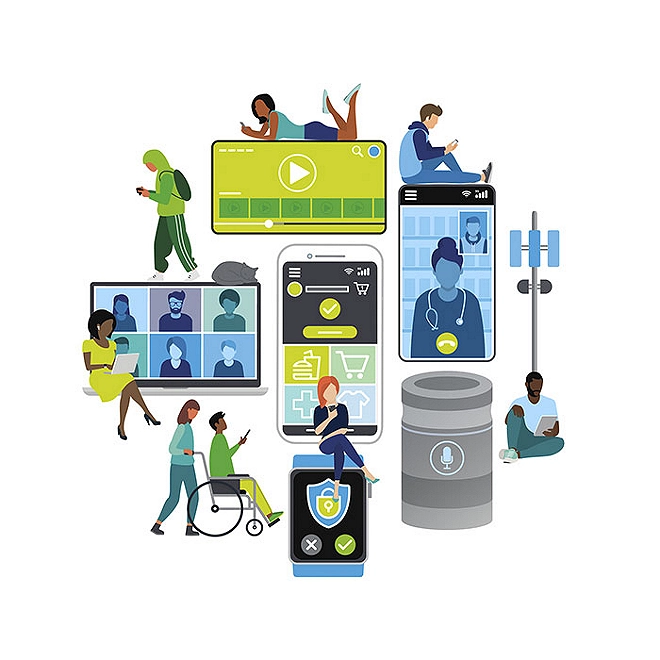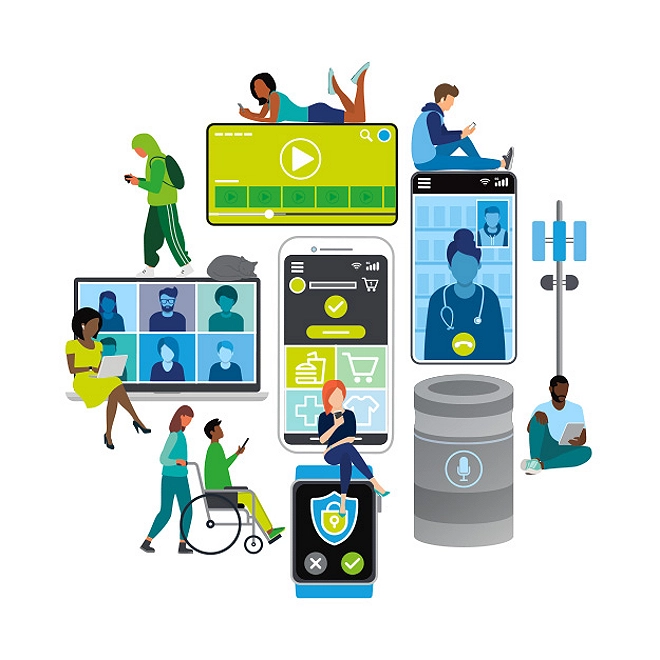Future of Mobile Operator Interaction
Digital Consumer Trends 2020
View previous editions
Highlights
- Digital channels are the most popular way to interact with the mobile operator.
- There is a strong relationship between the mobile provider and the broadband provider.
- 60% of consumers visit mobile operators’ stores.
Operator interaction
The way we shop has been changing over the last number of years, most likely expedited throughout the pandemic with a higher propensity of consumers to shop online, with 43% of consumers using their mobile alone to make online purchases.
Equally the way we interact with the mobile operators is changing, all operators have various channels to allow for communication.
From our survey we can see that the preferred method is digital, with 61% and 77% of consumers interacting through the operators’ app or website respectively.
Consumers’ top three reasons for interacting with operators is to query/check their bills (60%), followed by getting information on tariffs (46%) and to purchase a new mobile phone (37%). This is broadly similar to the UK, for the top 2 reasons in any case.
When you look across the age demographics, the 18-24 year old group tended towards in-store and website interactions, with websites being the preferred method across all age groups.
What does this mean for the operators’ retail stores? With 60% of consumers visiting stores over the last 2 years it still appears to be a popular channel.
Based on our survey consumers prefer to visit stores to purchase their phones (13%) and renew their contracts (12%).
Purchasing a mobile phone appears to be a more tactile experience for consumers, with 27% of respondents surveyed in the UK saying they would miss not being able to handle or try a new phone they are interested in if operators stores were permanently closed.
While digital channels are more popular than in-store for certain services, such as checking bills and tariffs and obtaining help or advice with technical issues which are predominantly done either on the operators’ own apps or websites.
Expanded offerings – driving footfall?
For the last number of years mobile operators have been expanding their offerings to include fixed lines, TV and broadband, further driving footfall into their retail stores.
Two of the largest mobile phone operators, Vodafone and Eir, are also significant players in the broadband market. According to this survey, 37% of respondents who use Vodafone as their mobile operator, and 49% of those who use Eir, are also buying broadband services from them, indicating that these operators have been successful in expanding the products their customers purchase.
Post lockdown
COVID-19 has changed the way consumers make certain purchases, resulting in significantly more online purchases.
Separately Deloitte’s Global State of the Consumer Tracker survey released in December 2020 indicated that consumer confidence was growing in relation to visiting physical stores however, with 64% saying they would be confident in doing so. Spending intention was up 13% for electronics, which would include mobile phones, and with 48% intending to use shopping in store for their electronic purchases, a potentially positive outlook.
Introducing innovative retail formats, including store-in-store, store-to-you and other pop-up concepts has the potential to not only capitalise on customer desire for both immediacy (i.e. avoiding delivery waiting times) and a tactile exploration of new mobile devices, discussed above, but also to align sales costs with fluctuations in demand.
Consumers, confronted by the many changes that COVID-19 has imposed, are currently more likely to be open to new ways of selling, and operators could use this moment in time to experiment.
Augmented reality and 3D technologies are changing how customers shop both online and in-store – could this be part of the solution?
The journey is just beginning.



